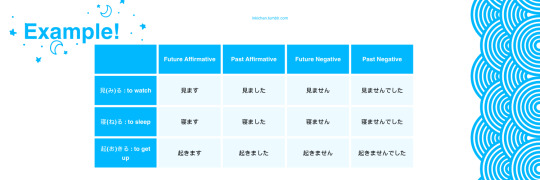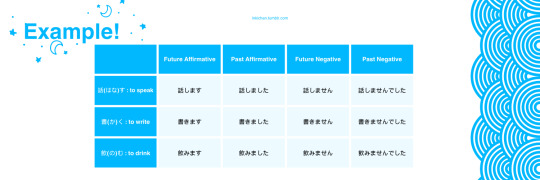Text
YouTube Channels for Kids by JLPT Levels
(。•̀ᴗ-)✧ resources

こんにちは, Japanese learners! Learning a language is an exciting adventure, isn't it? To add a spark of joy to your Japanese learning journey, here's a collection of YouTube channels tailored for kids. Organized by JLPT levels, these channels offer a blend of education and entertainment for learners at different stages. Keep in mind, though, that JLPT levels aren't an exact science like math – language learning can be subjective in terms of difficulty. However, these resources provide a fantastic starting point and a fun way to explore the world of Japanese language and culture. Let's hop into this delightful world of animated learning and playful discoveries!
Friendly reminder to adjust your way of learning in order to make the most of what you're studying to reach the goal you truly want! read my post about it (ᵔ◡ᵔ)
꒰ა ˚₊ ✧・┈・╴N 5 ╴・┈・𐑺 ‧₊˚໒꒱
— Curious George (N5 level)
— Japanese folk tales/anime series (Japanese audio/Japanese subtitles) from BomBom Academy (N5 level)
— Peppa Pig (N5-4 level)
— Anpanman (N5-4 level)
— NHK education (N5-4 level)
꒰ა ˚₊ ✧・┈・╴N4 ╴・┈・𐑺 ‧₊˚໒꒱
— Cinnamon Roll, Sanrio (N4 level)
— [Anime] Atashin'chi (N4-3 level)
꒰ა ˚₊ ✧・┈・╴N3 ╴・┈・𐑺 ‧₊˚໒꒱
— Sesame Street Japan (N3 level)
— Chibi Maruko Chan (N3-2 level)
꒰ა ˚₊ ✧・┈・╴N2 ╴・┈・𐑺 ‧₊˚໒꒱
— Precure (N2 level)
またね~@inkichan
꒰ა ˚₊ ✧・┈・╴﹕꒰ ᐢ。- ༝ -。ᐢ ꒱﹕╴・┈・𐑺 ‧₊˚໒꒱
#japanese#nihongo#studyblr#learn Japanese#learning Japanese#japanese langblr#langblog#japanese studyblr#日本語#study japanese#japanese resources#free resources#resources#japanese free resources#youtube#JLPT#JLPT N5
281 notes
·
View notes
Text
Human Japanese Lite · app review
(。•̀ᴗ-)✧ review

For those looking to embark on the path of mastering Japanese, Human Japanese Lite offers a solid starting point. This review delves into the pros and cons of the app, highlighting its structured approach, but also addressing its limitations.
Pros:
Structured Learning: Human Japanese Lite impresses with its well-structured approach to teaching the Japanese language. The app divides its content into chapters that alternate between grammar, vocabulary and useful informations. This structured approach ensures a balanced understanding of the language and helps learners progress systematically.
Thorough Explanations: One of the standout features of this app is its thorough explanations of Japanese grammar and vocabulary. Each subject is carefully explained, making it accessible to learners at various levels, from beginners to intermediate students. You'll find detailed insights into the intricacies of the Japanese language.
Comprehensive Basis: Human Japanese Lite provides a comprehensive foundation for learning Japanese. It's an excellent choice for those starting their Japanese language journey, as it covers fundamental concepts thoroughly. The clear explanations help build a strong linguistic base.
Textbook-Like Experience: The app offers a textbook-like learning experience on your mobile device. It's as if you have a Japanese language textbook at your fingertips. The content is well-organized, making it easy to navigate and find specific topics.
Chapter-End Tests: Human Japanese Lite enhances the learning process with tests at the end of each chapter. These tests allow learners to assess their understanding and retention of the material, reinforcing what they've learned. This interactive approach keeps learners engaged and accountable.
Cons:
Limited Free Version: While Human Japanese Lite is an excellent resource, the free version has limitations. If you're already familiar with kana (Hiragana and Katakana), you might find the free content less useful.
Expensive Pro Version: The pro version of the app comes at a relatively high cost, which can be a deterrent for some learners. The price might not be budget-friendly for those looking for an economical language learning solution.
Final Thoughts ★★★★☆
Human Japanese Lite is a valuable tool for anyone interested in learning Japanese. Its structured approach, thorough explanations, and chapter-end tests make it a fantastic resource. However, the limited free version, especially for those already familiar with kana, and the high cost of the pro version are downsides. If you're willing to invest in your Japanese language education, Human Japanese Lite can be a great choice.
Let me know what do you think about the app if you did try it and let's share experiences and resources!
またね~@inkichan
꒰ა ˚₊ ✧・┈・╴﹕꒰ ᐢ。- ༝ -。ᐢ ꒱﹕╴��┈・𐑺 ‧₊˚໒꒱
#japanese#nihongo#studyblr#learn Japanese#learning Japanese#japanese langblr#langblog#japanese studyblr#日本語#review#Human Japanese#app#language app#app review#Human Japanese Lite#HJ app#japanese learning app
52 notes
·
View notes
Text
expressing existence · preposition
(。•̀ᴗ-)✧ N5 grammar [ことのは lesson 19]

expressing existence
あります express the existence of inanimate object. For animate object, we use います.
ある: for inanimate obj
present aff / neg: あります | ありません
past aff / neg: ありました | ありませんでした
いる: for animate obj
present aff / neg: います | いません
past aff / neg: いました | いませんでした
☆ It marks the item with the particle が.
construction: ... が あります / います - there is/are ...
☆ It marks the item with the topic particle は. in this pattern, the location particle に is used for indicating the place.
construction: something/someone + は ... に + あります / います - something/someone is in ...
prepositions
when explaining where an object is, a preposition or a prepositional word is placed in front of the location mentioned. The particle に is used to indicate the location of the object.
construction: location + の + proposition + に
上 (うえ) - on/above
下 (した) - under
前 (まえ) - front
後(うし)ろ - behind
右 (みぎ) - right
左 (ひだり) - left
中 (なか) - in/inside
外 (そと) - outside
隣 (となろり) - next
間 (あいだ) - between
またね~@inkichan
꒰ა ˚₊ ✧・┈・╴﹕꒰ ᐢ。- ༝ -。ᐢ ꒱﹕╴・┈・𐑺 ‧₊˚໒꒱
#japanese#nihongo#studyblr#learn Japanese#learning Japanese#japanese langblr#langblog#japanese studyblr#日本語#n5#JLPT N5#grammar#basic grammar#japanese grammar#ことのは
60 notes
·
View notes
Text
understand, see, hear · particle が · particle と
(。•̀ᴗ-)✧ N5 grammar [ことのは lesson 18]

わかる, みえる, きこえる
The particle を is generally used to indicate the direct object with transitive verbs, but with the verbs: 分かる (わかる -> to understand), 見える (みえる -> to see), 聞こえる (きこえる -> to hear) you have to use the particle が
example: スパイン語(ご)が分(わ)かりますか
translation: do you understand Spanish?
particle が
we have seen the particle が being used to indicate the direct object of some verbs, but it can also express a relationship between two contrasting or opposing clauses.
example: 冬(ふゆ)ですが、 今日(きょう)は 暑(あつ)いです
translation: it is winter, but it's hot today
particle と
✩ with (accompained by): this particle is used to indicate specify the person or animal with whom an action is being performed. person/animal と -> with person/animal
example: ケンくんとこの映画(えいが)を見(み)ました
translation: I saw this movie with Ken
✩ exhaustive list nouns: this particle is used at the end of a list of two or more objects (inanimate or animate). Noun A + と + Noun B -> Noun A and Noun B
example: サラさんに 本(ほん)と辞書(じしょ)をあげました
translation: I have my book and dictionary to Sarah.
またね~@inkichan
꒰ა ˚₊ ✧・┈・╴﹕꒰ ᐢ。- ༝ -。ᐢ ꒱﹕╴・┈・𐑺 ‧₊˚໒꒱
#japanese#nihongo#studyblr#learn Japanese#learning Japanese#japanese langblr#langblog#japanese studyblr#日本語#n5#JLPT N5#grammar#basic grammar#japanese grammar#ことのは
123 notes
·
View notes
Text
ましょう - ましょうか · frequency adverbs
(。•̀ᴗ-)✧ N5 grammar [ことのは lesson 17]

ましょう and ましょうか
construction:
stem + ましょう -> let's + verb
stem + ましょうか -> shall I + verb + (for you)?
☆ ましょう express desire or enthusiasm. it means "let's do something"
サッカーをしましょう
let's play soccer
☆ ましょうか indicates a suggestion or offering of help
手伝(てつだ)いましょうか
shall I help you?
frequency adverbs
frequency adverbs are used to describe how often you do something. In general, they are placed at the beginning of the sentence or after the subject.
always -> いつも
usually -> たいてい
often -> よく
sometimes -> ときどき
not often, not much -> あまり
not at all -> ぜんぜん
いつも犬(いぬ)と散歩(さんぽ)します
I always take a walk with my dog
note: あまり and ぜんぜん always accompany the negative form
ケンはぜんぜん英語(えいご)を勉強(べんきょう)しません
Ken doesn't study English at all
またね~@inkichan
꒰ა ˚₊ ✧・┈・╴﹕꒰ ᐢ。- ༝ -。ᐢ ꒱﹕╴・┈・𐑺 ‧₊˚໒꒱
#japanese#nihongo#studyblr#learn Japanese#learning Japanese#japanese langblr#langblog#japanese studyblr#日本語#n5#JLPT N5#grammar#basic grammar#japanese grammar#ことのは
54 notes
·
View notes
Text
particles で · から · まで
(。•̀ᴗ-)✧ N5 grammar [ことのは lesson 16]

particle で
this particle may be translated as the preposition "in/at" in English
☆ location: the particle is used after "a place" to tell where a given action or event takes place.
日本(にほん)でこの写真(しゃしん]を)とりました
I took this photo in Japan
☆ tool, method (with, by, in...): this particle can also be used to indicate a tool or method
日本人(にほんじん)は箸(はし)でご飯(はん)を食(た)べます
Japanese people eat rice with chopsticks.
☆ reason, cause (due to, because of...)
田中(たなか)さんはよく仕事(しごと)でスパインに来(き)ます
Mr. Tanaka often comes to Spain for his work
particle から
this particle indicates a staring point, source or origin. It can be translated as "from", "out of", "since", or "after"
どこから来(き)ました
where do you come from?
particle まで
it indicates the ending point of a continuous action. "until", "through", "before"
6時(じ)まで働(はたら)きます
I will work till 6
またね~@inkichan
꒰ა ˚₊ ✧・┈・╴﹕꒰ ᐢ。- ༝ -。ᐢ ꒱﹕╴・┈・𐑺 ‧₊˚໒꒱
#japanese#nihongo#studyblr#learn Japanese#learning Japanese#japanese langblr#langblog#japanese studyblr#日本語#n5#JLPT N5#grammar#basic grammar#japanese grammar#ことのは
88 notes
·
View notes
Text
particles に and へ
(。•̀ᴗ-)✧ N5 grammar [ことのは lesson 15]

particle に
this particle may be translated as the preposition "to/at" in English.
☆ destination: the particle indicates a destination
明日(あした)会社( かいじゃ) に行(い)きますか
will you come to my office tomorrow?
☆ position (existence): indicates a location where people and things exist
今(いま)レストランにいます
now I'm at a restaurant
☆ specific time
8時(じ)にうちを出(で)ます
i leave home at 8am
☆ indirect object, contact: this particle can indicate the indirect object of a verb
サラさんの友達(ともだち)に会(あ)いました
I met Sarah's friend
particle へ
this particle may be translated as the preposition "to" in English. in general "へ" is pronounced "he" but when it is a particle it is pronounced "e".
☆ direction: it can indicate a direction when paired with the expression ほう which means "in the direction of, toward"
彼女(かのじょ)はあちらの方(ほう)へ行(い)きました
she went in that direction
☆ destination: like the particle に, the particle へ can also indicate the destination
来年(らいねん)ケンはイギリスへ行(い)きます
Ken will go to the UK next year.
またね~@inkichan
꒰ა ˚₊ ✧・┈・╴﹕꒰ ᐢ。- ༝ -。ᐢ ꒱﹕╴・┈・𐑺 ‧₊˚໒꒱
#japanese#nihongo#studyblr#learn Japanese#learning Japanese#japanese langblr#langblog#japanese studyblr#日本語#n5#JLPT N5#grammar#basic grammar#japanese grammar#ことのは
57 notes
·
View notes
Text
irregular verbs · particle を
(。•̀ᴗ-)✧ N5 grammar [ことのは lesson 14]

irregular verbs: to do and to come
There are two irregular verbs: する (to do) and くる (to come)
like other verbs, these are conjugated by adding a verb suffix to the stem. However, the verb stem changes. verb suffixes:
future aff -> ます
future neg. -> ません
past aff. -> ました
past neg. -> ませんでした
する · to do
future aff and neg: + します - しません
past aff and neg: + しました - しませんでした
the stems is し and not す
来(く)る · to come
future aff and neg: +来(き)ます - 来(き)ません
past aff and neg: +来(き)ました - 来(き)ませんでした
The stems is き and not く
note: there are only two main kinds of irregular verb, but other verbs that end in する and 来(く)る are conjugated in the same way as the above-mentioned verbs. examples:
to study: 勉強(べんきょう)する -> 勉強(べんきょう)します
to bring: 持(も)って来(く)る -> 持(も)って来(き)ます
particle を
☆ this particle indicates the direct object of a transitive verb:
昨日(きのう) 日本(にほん) の映画(えいが) を見 (み)ました
yesterday I saw a Japanese movie
☆ the particle indicates also the location of some movements or the location the subject is leaving for the following verbs: とおる (to pass) あるく (to walk) とぶ (to fly) のぼる (to climb, to go up)
お父(とう)さんは毎朝(まいあさこうえん)を散歩(さんぽ)します
my father takes a walk in the park every morning
☆ the particle indicates the location from which a remote action takes place. It is used with a verb of remoteness such as the following: でる (to pass) そつぎょいする (to graduate) おりる (to get off)
いつもあの駅(えき)で電子(でんしゃ)を降(お)ります
I always get off the train at the station.
またね~@inkichan
꒰ა ˚₊ ✧・┈・╴﹕꒰ ᐢ。- ༝ -。ᐢ ꒱﹕╴・┈・𐑺 ‧₊˚໒꒱
#japanese#nihongo#studyblr#learn Japanese#learning Japanese#japanese langblr#langblog#japanese studyblr#日本語#n5#JLPT N5#grammar#basic grammar#japanese grammar#ことのは
36 notes
·
View notes
Text
verb groups 1 and 5
(。•̀ᴗ-)✧ N5 grammar [ことのは lesson 13]

Japanese verbs don't change their forms based on who's speaking. There are two classes of regular verbs.
Group 1
in their dictionary form, group 1 verbs end in る (i-る or e-る). The stem form is needed to conjugate the verbs and verb suffixes depending on the tense. The stem form is made by removing the final る. examples:
to see: みる -> み to sleep: ねる -> ね
to get up: おきる -> おき
how to conjugate:
(present)future affirmative: ます
past affirmative: ました
(present)future negative: ません
past negative: ませんでした

note: in most books ます represents the present affirmative, but it is not entirely accurate. It actually refers to future actions and actions that have not started yet. But depending on the adverb (every day, every morning, sometimes...) that accompanies the verb, this form can represent the present.
Group 5
in their dictionary form, group 5 verbs end in the vowel "u" like the sounds う, つ, る, く, ぐ, す, む, ぶ, ぬ. these ending "u" sounds are dropped and replaced with "i" sounds to form the group 5 stem form. examples:
to speak: はなす -> はなし to write: かく -> かき
to drink: のむ -> のみ

またね~@inkichan
꒰ა ˚₊ ✧・┈・╴﹕꒰ ᐢ。- ༝ -。ᐢ ꒱﹕╴・┈・𐑺 ‧₊˚໒꒱
#japanese#nihongo#studyblr#learn Japanese#learning Japanese#japanese langblr#langblog#japanese studyblr#日本語#n5#JLPT N5#grammar#basic grammar#japanese grammar#ことのは
40 notes
·
View notes
Text
to like/not to like · be good/bad at
(。•̀ᴗ-)✧ N5 grammar [ことのは lesson 12]

expressing like and dislike
すき and きらい means respectively "favorite, to like" and "not favorite, to dislike" these conjugate like な-adj (see previous lesson)
the particle が is used to indicate the direct object. contruction:
something/someone + が + 好(す)きです -> to like something/someone
something/someone + が + 嫌(きら)いきです -> to dislike something/someone
to be good or bad at something
じょうず and へた means respectively "to be good at, well" and "to be bad at, not well" and they conjugate like な-adj too.
the particle が is used to indicate the direct object. contruction:
something + が + 上手(じょうず)です -> to be goot at something
something + が + 下手(へた)です -> to be bad at something
note: when referring to oneself the な-adjective 得意(とくい) is used instead of 上手 and for the negative both 得意 and 上手 can be used.
example: 私(わたし)は英語(えいご)が得意(とくい) or 上手(じょうず) じゃあるません
translation: I am not good at English.
またね~@inkichan
꒰ა ˚₊ ✧・┈・╴﹕꒰ ᐢ。- ༝ -。ᐢ ꒱﹕╴・┈・𐑺 ‧₊˚໒꒱
#japanese#nihongo#studyblr#learn Japanese#learning Japanese#japanese langblr#langblog#japanese studyblr#日本語#n5#JLPT N5#grammar#basic grammar#japanese grammar#ことのは
60 notes
·
View notes
Text
Slang Words
(。•̀ᴗ-)✧ vocabulary

words you might hear in small talk with friends
note: parents may find it unsuitable for younger children!
イカれる - to go crazy
なあ、この 運転士 (うんてんし)、イカれてるよ
Oh, the driver's a maniac. source
シケる - bad, distateful
あらやだ、このお煎餅もうシケってる
Yecch. This rice cracker is soggy. source
ブス - ugly
ナースと職員がブスばっか。
All the nurses and staff are ugly. source
ビミョー - kind of sucky, not good
ここのランチ美味しかった?
How was the lunch at this place?
ビミョ〜..
Not really… source
w - LOL
using "w" or "www" is similar to our "lol" or "lmao"
チャラい - flirtatious, player
あの人はチャラチャラしている。
That person is frivolous. source
腹減る (はらへる) - I'm hungry
食べなさい、おなかがへっているのでしょう。
Eat, for you are hungry. source
ひどい - it's terrible, you're mean
ひどい雨だった!
It was raining terribly! source
サイテー - worst
used colloquially to say something akin to English as "you suck"
サイコー - best, coolest
さいこうだぜ!
This is awesome, man!
どした - what's up?
can be also translated into: "what's wrong?" or "what happened"
マジで - seriously?
used in a surprised way like "are you kidding?!"
ヤバい - risky, wow
could also be used when you realize something. For example it's late and you say "shoot, we won't make it in time!" You'd use ヤバい to express "shoot"
めっちゃ - very
エマ、めっちゃ美人さんだね。
Emma.. You're really beautiful. source
this is a vocabulary list I found here! I searched for examples online and the source is linked whenever necessary ( ꈍᴗꈍ)
またね~@inkichan
꒰ა ˚₊ ✧・┈・╴﹕꒰ ᐢ。- ༝ -。ᐢ ꒱﹕╴・┈・𐑺 ‧₊˚໒꒱
#japanese#nihongo#studyblr#learn Japanese#learning Japanese#japanese langblr#langblog#japanese studyblr#日本語#study japanese#vocabulary#n5 vocabulary#japanese pod 101
38 notes
·
View notes
Text
な-adjectives · determinative form of な-adjectives · very/not very
(。•̀ᴗ-)✧ N5 grammar [ことのは lesson 11]

な-adjectives
な-adj behave like nouns:
な-adj + です -> it is + な-adj
な-adj + ではありません -> it is not + な-adj
な-adj + でした -> it was + な-adj
な-adj + ではありませんでした -> it was not + な-adj
example: サラさんは 親切 (しんせつ)です
translation: Sara is kind
Determinative form of な-adjectives
the な adj can't determine a noun on its own. You need to use its determinative form. To do this, add "な" between the adjective and the noun. Contruction:
な-adj + な + noun
note: 有名 (ゆうめい) famous, 綺麗 (きれい) beautiful and 嫌 (きら)い detestable end in い but these are な-adj
very, not very, not much
とても and あまり are placed before the adjective. とても can be translated as "very", あまり is always used with the negative form. Contruction:
とても + adj in affermative form -> very + adj
あまり + adj in negative form -> not very + adj
example: 今日 (きょう)はとても寒(さむ)いです
translation: today is very cold
またね~@inkichan
꒰ა ˚₊ ✧・┈・╴﹕꒰ ᐢ。- ༝ -。ᐢ ꒱﹕╴・┈・𐑺 ‧₊˚໒꒱
#japanese#nihongo#studyblr#learn Japanese#learning Japanese#japanese langblr#langblog#japanese studyblr#日本語#n5#JLPT N5#grammar#basic grammar#japanese grammar#ことのは
51 notes
·
View notes
Text
determinative form い-adjectives · いい and よい
(。•̀ᴗ-)✧N5 grammmar [ことのは lesson 10]

determinative form of い-adjectives
The い-adj has the determinative form. This serves to qualify the noun it accompanies.
The determinant precedes the determined noun. This is always the case in Japanese. Contrunction:
い-adjective + Noun
example: それは難 (むずか)しい 本 (ほん)です
translation: that is a difficult book
い-adjectives: いい and よい
In Japanese there are two adjectives which mean "good": いい and よい. よい is used for sentences in the negative and the past.
it is good: いいです | it was good: よかったです
it is not good: よくありません | it was not good: よくありませんでした
またね~@inkichan
꒰ა ˚₊ ✧・┈・╴﹕꒰ ᐢ。- ༝ -。ᐢ ꒱﹕╴・┈・𐑺 ‧₊˚໒꒱
#japanese#nihongo#studyblr#learn Japanese#learning Japanese#japanese langblr#langblog#japanese studyblr#日本語#n5#JLPT N5#grammar#basic grammar#japanese grammar#ことのは
46 notes
·
View notes
Text
い -adjectives
(。•̀ᴗ-)✧ N5 grammar [ことのは lesson 9]

In Japanese there are two types of adjectives (い-adjectives and な-adjectives). い-adjectives and in あい, いい, うい or おい.
These adjectives are conjugated differently from な-adjectives and nouns.
presente affirmative
these are polite forms because です, which indicates politeness, is placed after the adjectives. For the present affirmative, い-adjectives, な-adjectives and nouns are conjugated the same way.
example: ちいさいです
translation: it is little
present negative
the final い is replaced with く and ありません is added to make the present tense in the negative form.
example: ちいさい -> ちいさくありません
translation: it is not little
past affirmative
the final い is replaced with かった which express the past.
example: ちいさい -> ちいさかった -> ちいさかったです
translation: it was little (since "かった" doesn't indicate polite speech, です is added)
past negative
the final い is replaced with く and ありませんでした is added to make the past tense in the negative form.
example: ちいさくありません -> ちいさくありませんでした
translation: it was not little
またね~@inkichan
꒰ა ˚₊ ✧・┈・╴﹕꒰ ᐢ。- ༝ -。ᐢ ꒱﹕╴・┈・𐑺 ‧₊˚໒꒱
#japanese#nihongo#studyblr#learn Japanese#learning Japanese#japanese langblr#langblog#japanese studyblr#日本語#n5#JLPT N5#grammar#basic grammar#japanese grammar#ことのは
45 notes
·
View notes
Text
Tracking a Tag! · #heyinki

Hey みなさん! After a bit (and thanks to @tokidokitokyo) I've decided to start tracking a tag~
I'll from now on track posts that use #heyinki on the hashtags!
feel free to tag me wherever you want, if you find resources or anything you think could be helpful/fun!
a friendly reminder that this is a secondary blog, so I could like/follow/comment using my main asfreeastheuniverse or reblog with fitzyinkiawa! I hope we'll be able to share lots of stuff and create nice connections (>ᴗ•)
またね~@inkichan
꒰ა ˚₊ ✧・┈・╴﹕꒰ ᐢ。- ༝ -。ᐢ ꒱﹕╴・┈・𐑺 ‧₊˚໒꒱
#tracking#tag tracking#japanese langblr#japanese studyblr#studyblr#日本語#looking for moots#moots#study buddy
3 notes
·
View notes
Text
Asking the time · particles ね and よ
(。•̀ᴗ-)✧ N5 grammar [ことのは lesson 8]

What time is it?
何時 (なんじ) is an expression that means "What time is it?"
何 (なん) means "what" and 時 (じ) is a suffix which indicates "hour(s)".
ふん or ぷん is used according to the last number before this suffix which means "minute(s)"
note: sometimes it is acocmpained by 午前 (ごぜん) indicating A.M. or 午後 (ごご) P.M. placed in front of the time.
example: A: 今(いま) , 何時ですか B: 午後 (ごご)10時 (じ)22分 (ふん)です
translation: A: What time is it? B: It's 10.22 pm
particles ね and よ
The particle ね is placed at the end of the sentence to express approval, and confirm what the speakers says. It means "right?"
example: 日本語 (にほんご)は 難(むずか) しいですね。
translation: Japanese is difficult, right/isn't it?
The particle よ is placed at the end of the sentence to confirm and insist on the speaker's opinion. It is also used to advice or inform something new for the listener.
example: このパンは 美味(おい)しいですよ!
translation: this bread is delicious! (you should try it)
またね~@inkichan
꒰ა ˚₊ ✧・┈・╴﹕꒰ ᐢ。- ༝ -。ᐢ ꒱﹕╴・┈・𐑺 ‧₊˚໒꒱
#japanese#nihongo#studyblr#learn Japanese#learning Japanese#japanese langblr#langblog#japanese studyblr#日本語#n5#JLPT N5#grammar#basic grammar#japanese grammar#ことのは
81 notes
·
View notes
Text
refer to a person, indicate directions · particle も
(。•̀ᴗ-)✧ N5 grammar [ことのは lesson 7]

こちら, そちら, あちら and どちら
As we saw in the previous lesson, we cannot use これ, それ or あれ to refer as a person, you need to use:
こちら - this way, this person
そちら - that way, that person
あちら - that way, that person (over there)
どちら - where? who?
We use these to refer as a person in a polite way or indicate direction in formal context. Are often used in business situations.
example: こちらはこのレストランのシェフです。
translation: this (person) is this restaurant's chef.
particle も
this particle indicates an object that appears in addition to another object that has been introduced. It corresponds to "also" and "too". It may follow structural particles except for は, が and を.
example: A: サラさんはイギリス人 (じん)です。B: クリスさんもイギリス人 (じん)です。
translation: A: Sarah is British B: Chris is also British
またね~@inkichan
꒰ა ˚₊ ✧・┈・╴﹕꒰ ᐢ。- ༝ -。ᐢ ꒱﹕╴・┈・𐑺 ‧₊˚໒꒱
#japanese#nihongo#studyblr#learn Japanese#learning Japanese#japanese langblr#langblog#japanese studyblr#日本語#n5#JLPT N5#grammar#basic grammar#japanese grammar#ことのは#learn japanese#learning japanese
39 notes
·
View notes